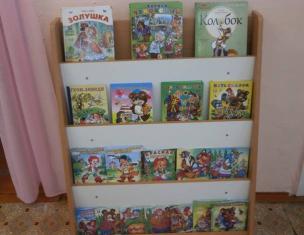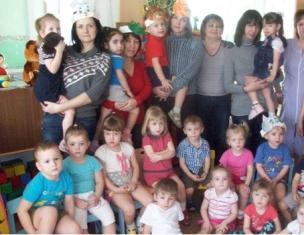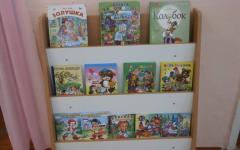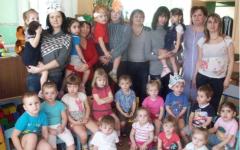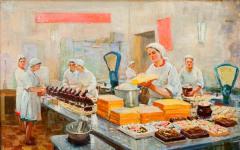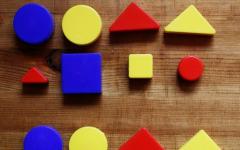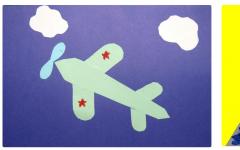According to psychologists, when perceiving the subject by a child, a key feature is a form with which it allocates an object among others. In this regard, the benefits of subject drawing are obvious, which implies the topic of "dishes". However, this topic is interesting in that it allows to make an accent and on another type of drawing - a decorative painting, which develops creative fantasy and brings up a sense of excellent in preschoolers of the average group.
Aspects that need to be considered when preparing for drawing on drawing in the Middle Group
Suitable paints and base
When drawing dishes In the middle group, the educator can offer children two base options: it can be the usual sheets of A4 paper (if children are painted with paints, then paper is toned in advance in pastel colors) or ready-made object templates (plate, cup with saucer, bank for Canning vegetables, etc.). The second way is more relevant if the main tasks of the classes are not just the transfer of the form of the dishes, and its decorative painting or addition of images with vegetables and fruits. You can also offer preschoolers pattern of such a dishes that it is still difficult for them to draw on their own (for example, a kettle).
You can paint the dishes and paints (gouache either watercolor), and colored pencils (as an option - wax crayons, markers). The composition created by the paints will be brighter, and pencils, in turn, can convey various colors.
Used techniques and techniques
The topic "Tableware" implies a substantive drawing, during which preschoolers learn more or less accurately transmit the form of the subject, its characteristic features. Drawing several objects of dishes (for example, a cup and saucer), children learn to harmoniously plans an image on a sheet of paper, repeating the silhouettes of the same objects (kettle and cups).
When painting paints, the guys work out the ability to carry out a brush wide and narrow lines (all pile and tip), paint the image without leaving its contour. Children learn to receive new shades of paints, mixing them in different proportions - it allows you to more expressly convey the image. Improved primitive technique (when painting on dishes of various elements (colors, leaves, berries).
As for the decorative painting, the teacher brings the pupils of the average group to the patterns in the structure of the pattern. Children learn to fill in the pattern any form (round plate, a cup that resembles a halm of oval, etc.). Moreover, the decorative decoration of the silhouette first should precede the decoration of the finished form (the optimal version is a plate, since it has a circle form). The ornament can be fantasy (the guys come up with him by relying on samples of the educator) or to create on the motives of the folk decorative and applied art (chimka, Gzhel, etc.).
Additional types of visual activities that can be used when drawing dishes
When drawing various objects, dishes for children will be interested in using additional types of visual activities, in particular, the modeling and applique. So, the drawn bank with canned vegetables or fruits will look original, covered on top of a glued with colored paper. On the painted plate can be glued with carved paper fruits or vegetables.
The saucer can be decorated with a border of small plasticine balls, and a cup to supplement the styled handle of the same color.
The relevance of the use of an individual approach to the class on this topic
Many drawing classes make it possible to individualize the tasks on the plan and the level of complexity. The topic "Dishes" is no exception. So, if the children are painted and decorate pattern patterns, then stronger children who are well and quickly coped with the task, you can offer to arrange another option, but only in another way.
Another option is to preschoolers who have already visible artistic abilities, you can complicate the tasks a little. For example, if the subject of classes is a plate with fruits or vegetables, you can offer such children to portray objects that are a bit more complicated (grapes, corn, etc.).
The place of the topic "Dishes" in the drawing of drawing classes in the middle group DOU. Specific options for compositions within the subject
Occupation on the topic "Dishes" in the middle group can be carried out at various stages of training. It can be dedicated to the appropriate topic for the knowledge of the surrounding world or to be offered after reading the fairy tale or the story of such the subject (for example, the roots of Chukovsky "Fedorino Mount").
Another option is to fasten the skills of decorative painting based on the folk decorative and applied creativity (chimka, Gzhel, Khokhloma).
An interesting solution is to make a gift for the topic "Tableware" for moms and grandmothers on the eve of the holiday of March 8 (for example, painting a beautiful pitcher or tea pair).
In the middle group, children can already draw a plate independently (attaching an idea of \u200b\u200bround forms), a cup, a tea pair, a simple pitcher.
The composition can be diversified by offering a preschooler to portray not just a plate, but with vegetables, fruits or berries. As an option - a plate with a piece of pizza on it. Original work - supplement the pattern of canned vegetables or fruits.
This topic allows you to organize both collective work that usually like preschoolers. For example, the educator draws a teapot on a sheet of Watman (either gluits its image), and children are invited to paint the patterns of cups, and in the same style as the kettle. At the end of the occupation, they are all attached next to the kettle - it turns out a tea service.
Various options for motivating start classes (viewing things, pictures, questions for conversation, fairy tale, etc.)
The presenter type of activity of preschoolers is, of course, the game. Therefore, any lesson in kindergarten should be carried out in a game form. As for productive activities to which drawing relates, it must necessarily be stimulated by the motivating start of classes. The guys must come to some kind of fabulous or cartoon character, the animal with its problem that children are allowed during the drawing process.
For example, if we consider the topic of dishes, then the doll appears before children, which is waiting for guests to visit the girlfriends and is experiencing that she has no cups or plates (or they are, but ugly, without any pattern).
Another option is to preschoolers from the forest of some animal (protein, hedgehog) and asks to help him get ready for winter - make a jar with canned mushrooms or fruits. Baby, of course, want to help him and with great pleasure are accepted for work.
Note that any practice on drawing should be preceded by preliminary work on observation of objects that pupils will be depicted. So, relative to the topic "Table" will be perfect on the eve of organizing the appropriate plot-role-playing game with children ("cafes" or "tea drinking"), during which kids kids will enshrine external and functional signs of individual objects of dishes.
The game "Cafe" is directly interconnected with dishwashed topics and enshrines
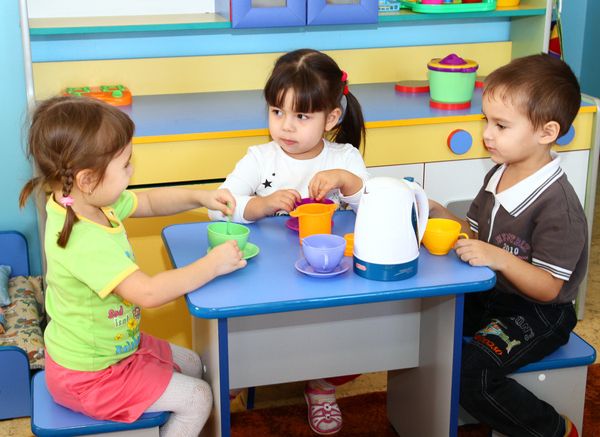
During the game, the kids are improving the skills of social interaction, and also enshrine the knowledge and appointment of objects of dishes
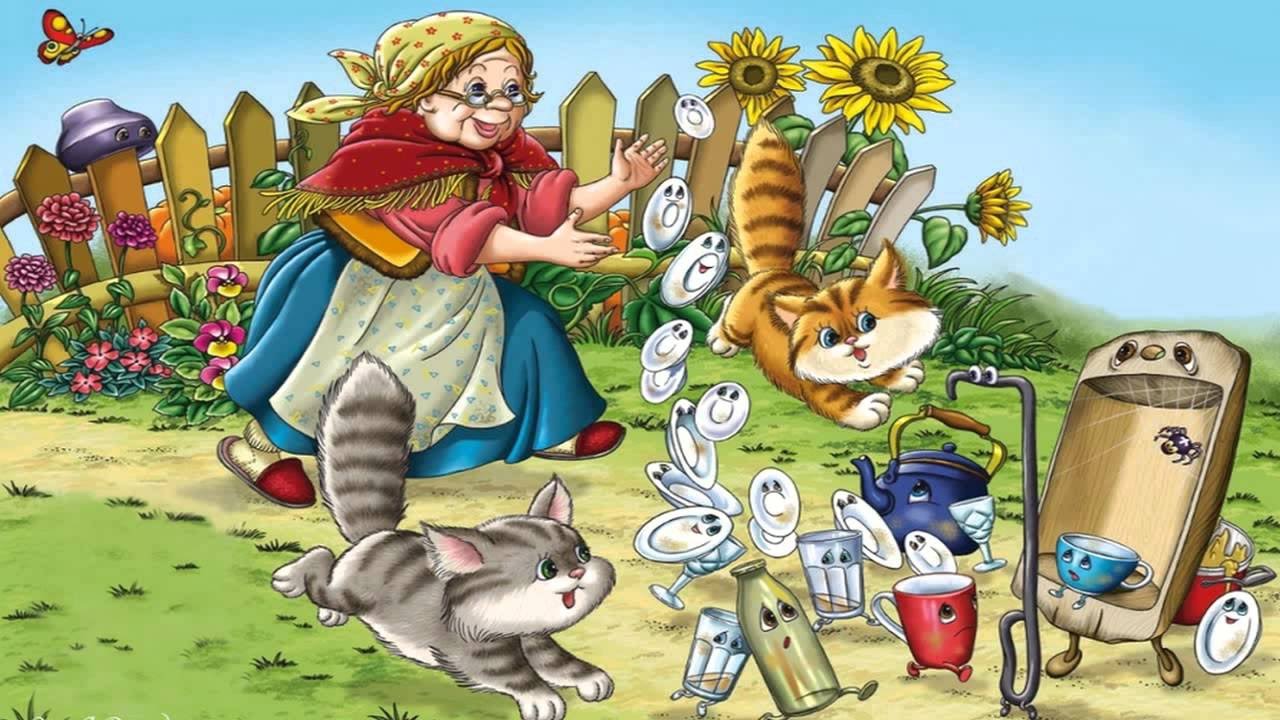
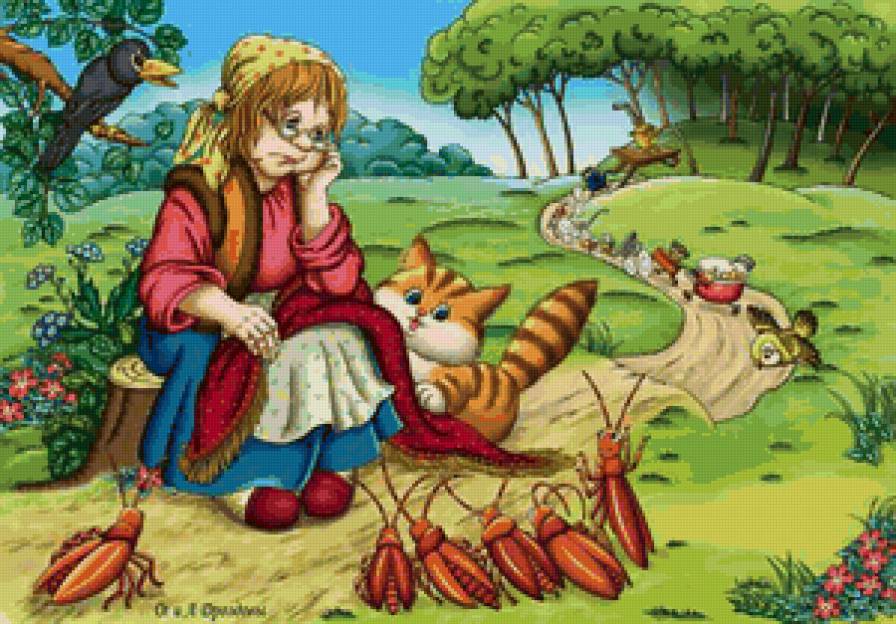
Illustration to the fairy tale K. Chukovsky
You can also use the following poems (by the way, the motivation can be learned from their plot):
S. Buslova
I S. dishes Careful –
After all, you can smash the dishes.
I wear, and I will put
Gently all the dishes!E. Nikolaev
I will cook now.
Colon on the table dishes.
Here, saucepan, cook,
Skin, plug, spoon.
Small table knife
I will need too.
Here, with plates patterns,
Cup with saucer on a napkin.
And, of course, it is no coincidence
The kettle smokes on the stove -
Dolls drink tea to impose
I'll tell about the dishes.I. Bel.
Fork with a spoon was knighted
Could not understand in any way
Who needs a person
Whose mouth is more important step.
Fork, pushing, said
What is cutlets and mushrooms
Man helps
Eat it without fuss.
"Well, who helps
Have broths and soups? -
Spoon asked -
Maybe it's too? "
"Stop to silent, neighbor -
The knife murmured in response -
Everyone knows in this house
What is more important me!
If you can't help
People I cook lunch
Man will forget about you
As if you are not in the kitchen! "
Rifled fork with a spoon
Only torments the question:
"Is it true that in the kitchen
Is it more important - this is a knife? "G. Shagaliyeva
Spoons cried in the kitchen
Pots, forks, cooks.
And knives are not lagging behind
As if they go to battle.
The kettle suddenly how to witness.
Stop! - Dishes He speaks.
We need together, brothers,
Calmly understand!
Without pots, soup do not cook -
It is clear to everyone around.
Pour the cook.
What can I say here?
Only if there is no plate,
What will all be from?
The main is not in the kitchen, for sure.
This can be considered.
Soup has long been poured into a plate,
What can I eat it?
Maybe fork? That you are a spoon!
Is it clear to you now?
Bread spoon do not cut.
Here you need some knives.
Well, and if on a plate
Put the vinaigrette, -
Cooking you do not eat.
This is generally not a secret.
Here you need a simple plug.
Well, drinking juice from the bottle?
This is right funny!
Ugly and sin.
Need a glass of you -
And not a mug, and not a pelvis.
Enlightened a little you?
So you do not fuss,
Do not swear, do not touch.
You need everything in the kitchen
And for everyone is important.http://www.numama.ru/blogs/kopilka-detskih-stihov/stihi-pro-posudu.html
N. Nishchev
Here is a large glass kettle,
Very important as the boss.
Here is porcelain cups,
Very fragile, poor things.
Here is a porcelain saucer,
Only knocks - disassemble.
Here are silver spoons,
Head on a thin leg.
Here is a plastic tray.
He brought dishes to us.N. Nishchev "Machine Porridge"
Masha Kasholina,
Masha porridge all fed.
Put Masha Kashov
Cat - in a cup,
Bug - in a toss
And the cat is in a large spoon.
In a bowl of chicken, chickens
And in the browstone piglets.
All the dishes occupied
All to the crumb distributed.R. SEF "Council"
Quarreled
Cup and saucer
Now
They will break.
Soon
In the kitchen on the shelf,
Will be lying
Fragments.
And you
Do not quarrel in vain -
It is very dangerous.Sapgir "Tea Party"
On the other purpose we went
To the turtle.
Our owner filed
Kettle, cups.
Crawled later
To the neighbor for tea.
Two hours we sit,
We expect.M. Yasnov "The cup got sick"
That's what it is:
The cup got sick!
From the table fell -
The handle flew off.
Sick Cup
And sighs hard:
"Who is me, sleepless,
Take hoists in hand:
Like in the forest, aucha,
And the circle is no sound! .. "
I hear, I hear a cup -
Do not be sad, poor thing!
I am a sore,
Gear, boring:
Lunch lie,
Afternoon chapter
Dinner lie down,
And to breakfast again
You will be healthy!http://www.razumniki.ru/stihi_pro_posudu.html
In order to directly productive activities, there is a game of small mobility, physical attack or finger gymnastics. In their topics, they should also be associated with the theme of dishes. Let us give the following example:
Finger gymnastics "Assistant"
Another option is a game of small mobility "Tableware".
The teacher proposes the guys to go to the carpet and imagine that they turn into objects of dishes.
You can also hold the didactic game "What is missing?": On the table there are objects of dishes, children remember them. The teacher then covers them with a handkerchief and removes one thing - children must understand what is missing.
Abstracts of classes - variations on the topic "Dishes"
| FULL NAME | Name of abstract |
| Osintseva P.P. | "Cup decoration" Educational tasks: Learning to decorate the object template, the tip of the brush to draw points and thin lines, and wide - to all pile, fix the skill thoroughly rinse the brush before using another paint, Developing tasks: consolidate the generalizing concept of "utensils", the ability to classify objects of dishes (tea), to activate the vocabulary, develop attention, figurative thinking. Educational challenges: to bring up independence, initiative. Integration of educational areas: "Artistic creativity", "Cognition", "Communication", "Socialization", "Health". Demonstration material: Doll Dunno, Watman with the image of the kettle in the middle. Distribution material: Templates of cups according to the number of children, gouache, tassels, unpolivatives. Travel course: Surprise moment - the appearance of a minor who comes with a "broken" kitchenware - cut pictures. He informs children that she was in a hurry to them, and therefore fell and broke all the dishes. The teacher with children soothes melanchka and promise to help him. Didactic game "Collect the picture": Children are enveloped with cutting pictures and they collect a whole image - "reinforced" dishes. Next, Dunno makes the guys riddles about the dishes (the tutor demonstrates the corresponding pictures). Particularly accentuated at the kettle:
It is discussed in detail its structure (nose, cover, handle), purpose. Dunno reports that he has cups, but they are not so beautiful as the kettle, without a picture. Children with joy agree to decorate them. Independent activities of children. |
| Harutyunyan M.A. | "Plates" (Painting pencils on paper circles with a diameter of 6-8 cm) Interesting Motivation of classes - the teacher creates a problem situation: on the way to work, she met two dogs who reported that they were going to visit friends. A telephone call is heard - they call the encounter, cry, because they crashed the plates. They were so beautiful, and nowhere to put a treat for guests. The educator offers the guys to help bunnies, demonstrates preschoolers a few plates with different patterns, focuses on its location. At the end of the class appear toy bunnies and ask children to help them wash, tie a bows. They say goodbye and thank the guys for beautiful plates. |
| Ermakova I. | "Decorative dishes" (Painting cup by the Khokhloma Pattern) At the beginning of the classroom, the teacher makes riddles about the dishes, reports that there are several types of its varieties: a kitchen and dining room, tea and for storing products. Aidactic game is offered - toy dishes need to be painted by type. Clauses are considered with different patterns. And here there is a motivative moment: the teacher reports to the guys, which turns out to be the kids in the nursery group just white cups, and they would like to help them - decorate dishes with khokhloma patterns. |
| Berdnikova E.N. | "Tea Couple" This occupation is held on the eve of the holiday on March 8. The educator proposes to please his mom's gift - drawn tea couple. Reading poem
Children paint silhouettes of cups and saucers, and then decorate them with patterns. |
| Fedotova E. | "Plate" (Decorative drawing based on Dymkovsky painting) The occupation unexpectedly begins with a riddle about the hare. Then a sad toy bunny appears before children. He tells the guys that when he walked towards her kindergarten, he met the dogs in the courtyard of dogs and bung glasses, such beautiful, with shiny wool, bows. It turns out that they gathered to visit friends with her mom. Bunny also wants to receive guests, but he has no plates. The tutor proposes the guys first to draw on a sheet of paper plates, and then decorate them with Dimkovsky patterns. Before children are albums with samples of this painting, as well as toys and dishes. |
Samples with a phased description of the procedure for performing work within the designated topic in the medium group
Photo 2 and 7 presents drawings of children "Tea Couple". In the first embodiment, paints were used as a material, in the second - pencils.
The painting of the saucer we see in the photo 11 and 12 - drawing based on the Dymkovsky decorative and applied creativity and fantasy ornament from apples and berries.
The topic of the dishes opens up great opportunities for the use of non-traditional techniques of the image. In this regard, it is interesting to photo 3 "Tea set on a napkin", where kettles are decorated with fragmentary appliqués (napkins). Photo 6 ("Kettle") demonstrates us a drawing with fingers. Original work in photo 8 and 9, where fruits are depicted using halves of apples.
Scene compositions - vegetables and fruits on plates - presented in photo 4, 5 and 10. It is already more developed orientation on a sheet of paper, the ability to harmoniously arrange objects in the figure.


